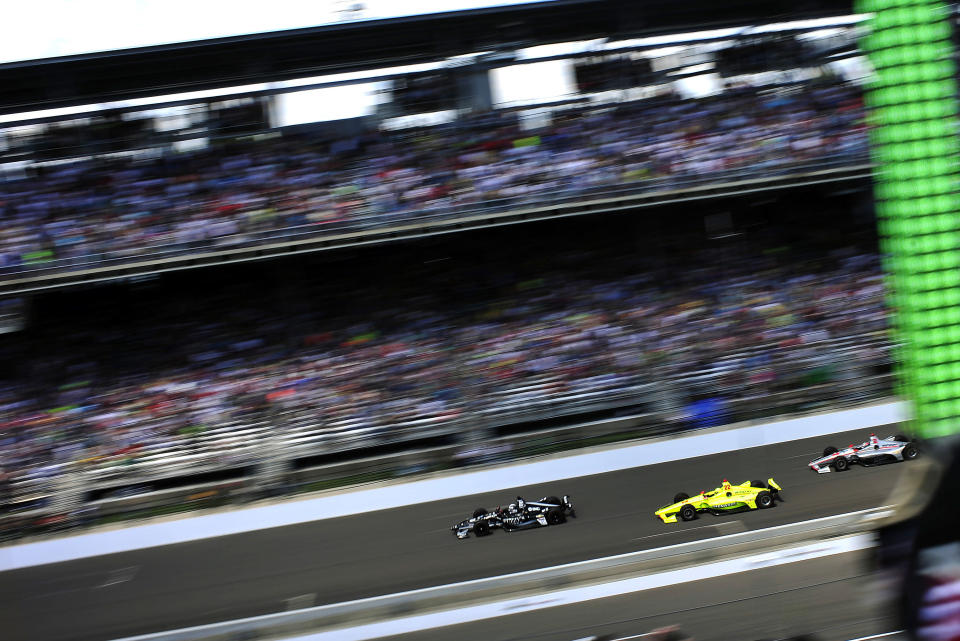Andretti, Ganassi and Penske agree: Indy 500 should have guaranteed starting spots

The three most powerful owners in IndyCar want the series’ most famous race to have guaranteed spots for full-time teams.
Michael Andretti, Chip Ganassi and Roger Penske have all said recently that they want the Indianapolis 500 to no longer feature the 33 fastest cars in qualifying. It’s been a longstanding Indianapolis 500 tradition — albeit with a few breaks — to not have guaranteed starting positions.
On Thursday, Andretti agreed with the sentiments first shared by Penske and Ganassi.
"My feeling is you have to look at the overall health of the series and the strength of the series, and how do we make the series stronger? It’s by bringing in more sponsors," Andretti told the Indianapolis Star. "Obviously the Indy 500 is still the Super Bowl, and if a sponsor who has supported the series all year doesn’t make it in the biggest race of the year, it’s a huge blow to the overall health of the series."
Penske was the first of the three owners to support a system that rewards full-time IndyCar teams and suggested it last May in the wake of James Hinchcliffe’s failure to make the race. There are currently fewer full-time IndyCar teams than there are starting spots for the Indianapolis 500, so there would be plenty of room for part-time and Indy 500-only teams to qualify for the race. But on the flip side, there’s not much danger in full-time teams missing out on the race either.
"[Penske’s] still in front of me on this but not far," Ganassi said at the Long Beach Grand Prix. "He knows what it’s like not to be in that race. Thank god I don’t know what that’s like. But I would say I agree with him. I mean when you’re making the commitment all year for the series, I think a commitment is just that. A commitment is a commitment, you know?"
Indy 500 has had guaranteed entries before
When the IndyCar Series — then known as the Indy Racing League — was a separate entity from CART in the 1990s there were guaranteed Indianapolis 500 starting spots for IRL participants. After all, the IRL was owned and operate by Tony George, the then-president of Indianapolis Motor Speedway. That limited the number of spots that team owners Penske and Ganassi could aim for because they were members of CART.
That split led to CART trying and failing to make the U.S. 500 at Michigan a rival race to the Indy 500.
The two series re-unified in 2008 and there haven’t been any guaranteed starting positions at the 500 since.
Big teams rarely miss the race anymore
Penske’s teams famously missed the 1995 Indianapolis 500 a year after its two drivers Emerson Fittipaldi and Al Unser Jr. had dominated the race. So it’s understandable that he wouldn’t want to experience that heartbreak again. Same for Andretti, who saw driver Ryan Hunter-Reay miss the race in 2011 and had to cut a deal with another team to get Hunter-Reay and his sponsor into the race.
And the idea is still relevant because of Hinchcliffe’s miss of the 500 a year ago. He’s one of the most marketable drivers in the series.
But it’s also an overblown one. Teams like Andretti, Ganassi and Penske already have a significant advantage when it comes to qualifying for the Indy 500. That advantage is money.
Money buys speed. The three teams have combined for every IndyCar title since 2003 and boast all but one of the top six drivers in the points standings through the first four races of 2019. Simply put, the chances of an Andretti, Ganassi or Penske driver failing to qualify for the Indianapolis 500 in today’s racing environment are incredibly slim.
And besides, isn’t that drama a big part of what the Indianapolis 500 qualification process is about? While it was horrible for Hinchcliffe that he had to watch the race in 2018, his qualifying miss provided a big lead-in story for the race that may not have existed otherwise.
Sports are engaging because of both failure and success. So while you can’t blame IndyCar’s three most powerful owners for wanting to limit their chances for failure, their concerns should be brushed aside by the IndyCar Series.
– – – – – – –
Nick Bromberg is a writer for Yahoo Sports.
More from Yahoo Sports:

 Yahoo Finance
Yahoo Finance 
